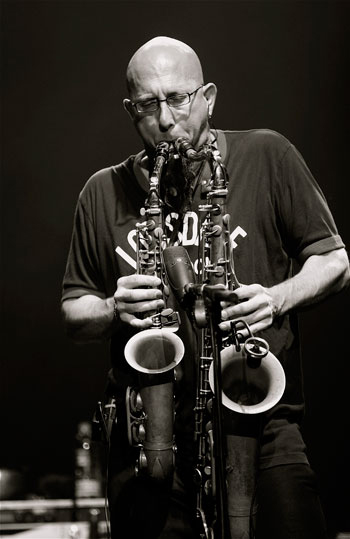Being on the road with Dave Matthews Band, my own group—the Mu’tet— and doing clinics and other spot gigs here and there, I need to find a way to spend quality time on all my instruments every time I play. I perform on soprano, tenor, alto and baritone sax; flute and alto flute; and sometimes clarinet or bass clarinet. I need to be sure that each instrument is in good working order and that I have good reeds to use.
THE SPACE. Every day, I find a space to practice. It might be in a closet, a room, side stage, the bus, wherever. There is always someplace.
THE REGIMEN. On each instrument I have a similar technique of going through the horns. I do scales and arpeggios from the lowest note on the instrument to the highest—into altissimo on sax. I do them at a medium tempo, so I can feel the reed consistency and be sure the horns are not leaking.
As an example, if I am doing Dominant 7th chords, I will begin on the lowest note of the chord. If it’s a C7, I will start on the low Bb on the sax, low G on clarinet and low C on flute. It forces me to invert the chords and to really listen to the relationship between the notes. I do them up and then come back down again. I do this for a number of chord (and scale) types. I also do long tones with a tuner, and I always use a metronome.
I also experiment with new musical genres like playing Brazilian choro music on flute. I find that practicing a style of music I am not fluent in, or possibly even familiar with, brings other influences to my playing and forces me to listen in a different way. And, as we all know, listening is the most important part of being a musician.
THE CONNECTION. Playing a few minutes on each horn can sometimes take a couple hours. Doing this puts me in touch with the instrument for the day and warms up my body and mind. Consistency is key, and I find that working this way allows me to improve as well as stay very consistent with my playing on the road.


